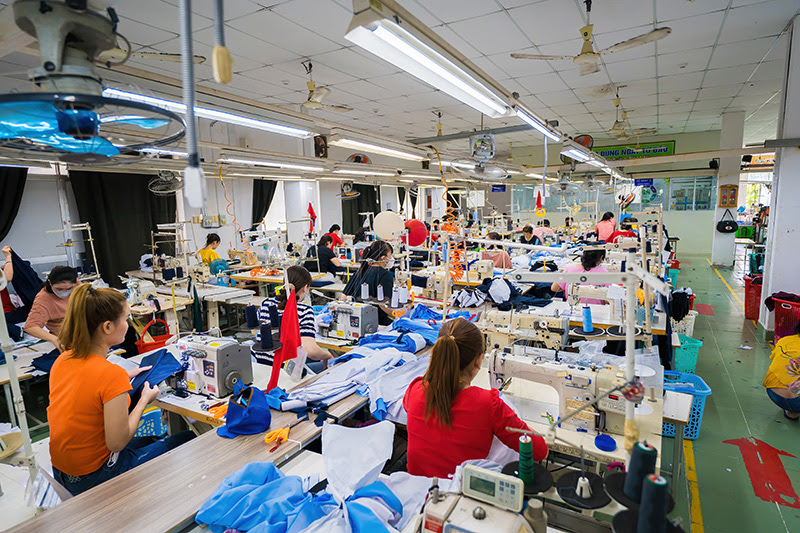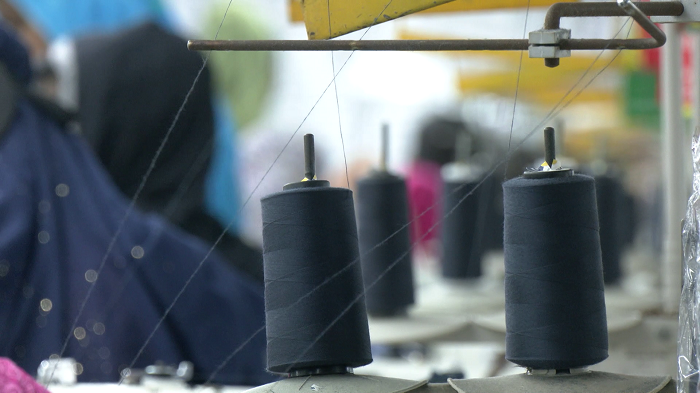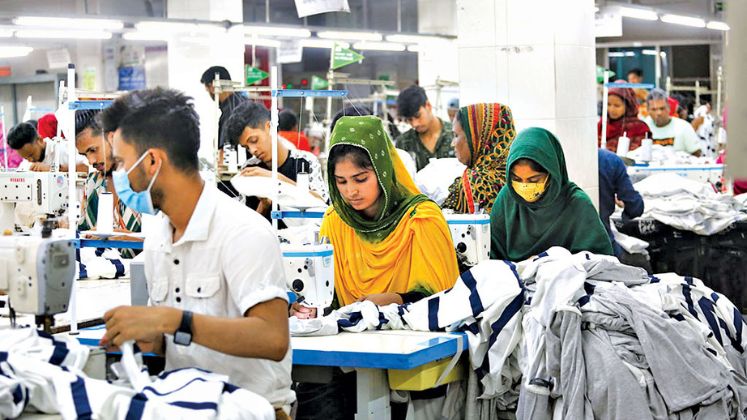
Bangladesh's apparel industry, a strong pillar of its economy, finds itself on shaky ground. While China's policy shift granting duty-free access to 100 per cent Bangladeshi apparel products is a golden opportunity, it also brings forth a complex web of contradictions and challenges. This intricate relationship, marked by dependence and competition, will profoundly impact Bangladesh's long-term trajectory in the global garment market.
China's shifting policy, a boon or bane?
China's decision to grant duty-free access to Bangladeshi apparel is part of its broader strategy to strengthen ties with Least Developed Countries (LDCs). This move, on the surface, seems like a significant win for Bangladesh, offering a gateway to the world's largest consumer market. However, the reality is quite different.
Table: Bangladehs-China exports
|
Year |
Bangladesh's Exports to China ($ bn) |
China's Exports to Bangladesh ($ bn) |
|
2022-23 |
0.676 |
18.6 |
|
Source: |
Export Promotion Bureau (EPB), Bangladesh |
Despite the duty-free access, Bangladesh's exports to China remain a mere fraction of China's total imports. This stark contrast highlights the challenges Bangladeshi manufacturers face in penetrating the Chinese market, including competition from domestic players, stringent quality standards, and complex distribution networks.
The fact is Bangladesh's apparel industry is heavily reliant on China for raw materials, particularly fibers, yarns, and fabrics. This dependence creates a vulnerability and any disruption in the supply chain can severely impact production and exports. While China's raw material dominance offers cost advantages, it also stifles the growth of Bangladesh's domestic textile industry. This over-reliance poses a long-term risk, hindering diversification and increasing susceptibility to price fluctuations and geopolitical uncertainties.
Table: Bangladesh raw materials imports from China
|
Raw Material |
Import from China (%) |
|
Cotton Fiber |
60% |
|
Synthetic Fiber |
70% |
|
Yarn |
45% |
|
Fabric |
30% |
|
Source: |
Bangladesh Textile Mills Association (BTMA) |
Competing on the global stage
Bangladesh and China are fierce competitors in the global apparel market, particularly in the European Union and the US. While Bangladesh has made significant strides in recent years, surpassing China in terms of growth in certain markets, the challenge remains formidable. China's vast manufacturing capacity, advanced technology, and established supply chains give it a competitive edge. To stay ahead, Bangladesh needs to focus on product diversification, innovation, and skills development.
Table: Bangladesh, China apparel exports
|
Market |
Bangladesh's Apparel Exports ($ bn) |
China's Apparel Exports ($ bn) |
|
EU (2022) |
23.4 |
223 |
|
US (2022) |
9.2 |
23.8 |
|
Source: |
World Trade Organization (WTO) |
Bangladesh's relationship with China in the apparel sector is fraught with contradictions. While China offers a massive market and a source of affordable raw materials, it also poses a significant competitive threat. This duality requires a strategic approach.
Bangladesh needs to leverage the duty-free access to expand its exports to China while simultaneously reducing its dependence on Chinese raw materials by investing in domestic textile production. Also, focusing on niche markets, sustainable practices, and value-added products can help Bangladesh differentiate itself from Chinese competition.
The road ahead is not without challenges. Bangladesh's apparel industry faces rising labor costs, infrastructure bottlenecks, and compliance issues. However, the country's young and vibrant workforce, entrepreneurial spirit, and government support provide a strong foundation for growth.
By navigating the complexities of its relationship with China, Bangladesh can unlock the full potential of its apparel industry and solidify its position as a global garment manufacturing powerhouse.
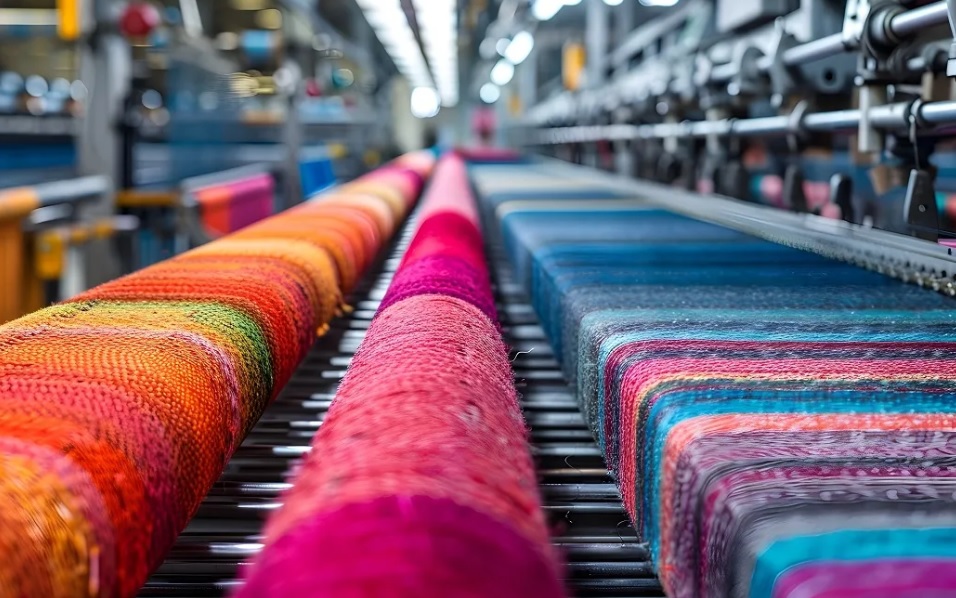
India’s textile industry players recently announced their Q2 FY25 results and the performances were mixed. While some companies exceeded expectations, others faced challenges, highlighting a complex state of affairs. However, despite some setbacks, the long-term outlook for the industry remains positive.
Highs and lows marked the quarter
Varying revenue growth: While some companies like Vardhaman Textiles reported 4.38 per cent year on year (YoY) revenue increase others like Ambika Cotton and Sutlej Textiles and Industries Limited saw a drop. This disparity highlights the uneven nature of the recovery in the sector.
Profitability concerns: Despite revenue growth, profitability remains a concern for some companies. Vardhaman Textiles, for instance, saw a 17.47 per cent quarter on quarter decline in profit, despite a YoY increase. This suggests that increasing input costs and other operational challenges are impacting margins.
Strong exports: The export market continues to be a bright spot for the industry, with several companies reporting strong growth in overseas shipments. This is driven by factors such as the ongoing recovery in key export markets and the competitive advantage offered by Indian textiles.
Table: Revenue and profit growth
|
Company |
Revenue growth (YoY) |
Profit growth (YoY) |
Key takeaways |
|
Vardhaman Textiles |
4.38% |
46.57% |
Strong YoY growth in both revenue and profit, but QoQ profit decline raises concerns. |
|
Arvind Limited |
14% |
7% |
Robust recovery from Q1 challenges, driven by strong performance in textile division. |
|
Welspun India |
15.50% |
Strong revenue growth driven by exports, but profitability data not yet available. |
|
|
Ambika Cotton Mills |
Faced revenue decline, highlighting challenges in the domestic market. |
Factors influencing performance
There are several reason for this kind of performance in the sector. Fluctuating raw material prices is a major one. Volatility in cotton prices continues to impact the industry, affecting input costs and profitability. Global economic slowdown too is impacting demand for textiles, particularly in the export market. Increasing competition from countries like Bangladesh and Vietnam is putting pressure on Indian textile companies. However, government initiatives such as the Production Linked Incentive (PLI) scheme are expected to provide a boost to the industry in the long term.
While the long-term outlook for the industry remains positive, some concerns still needs to be addressed. First, the disparity in performance between different companies highlights the need for greater consistency and resilience in the sector. Despite revenue growth in some cases, declining profits is a concern that needs to be addressed through cost optimization and efficiency improvements. And while exports are currently strong, the industry needs to reduce its dependence on overseas markets and focus on strengthening domestic demand.
Overall, the Q2 FY25 performance of the Indian textile industry is mixed compared to the same period last year. While some companies have shown strong growth, others have faced challenges. The industry is facing complex environment with various headwinds and tailwinds. The long-term outlook remains positive, but addressing the current challenges will be crucial for sustained growth.
Green Threads DPP, based in Hampshire, has officially launched a Digital Product Passport (DPP) solution for the uniform, workwear, and outdoor apparel industries. The company aims to help brands combat greenwashing, improve supply chain transparency, and meet upcoming EU Green Deal regulations requiring DPPs for all apparel sold by 2030.
The platform works with universities, textile suppliers, brands, governments, and manufacturers worldwide to ensure compliance and provide consumers with detailed product data. Green Threads DPPs are scannable via QR codes, RFID tags, or NFC chips, offering insights into a product's origin, carbon footprint, water usage, materials, and end-of-life details.
Iain Kettleband, CEO of Green Threads, highlighted the significance of their solution, stating that brands can benefit by adopting the Green Threads DPP, which audits and tracks every stage of a product's journey. He explained that the platform empowers both businesses and consumers with easily accessible data to make informed decisions, while also driving continuous improvements in sustainability.
Green Threads also assists brands in setting decarbonization goals through tailored Carbon Reduction Plans, providing actionable data for future sourcing decisions. Benefits include compliance with EU Green Deal regulations, eliminating greenwashing, showcasing ethical and sustainability credentials, and creating a direct consumer touchpoint for brand engagement.
The DPP system goes beyond regulation, allowing brands to demonstrate their sustainability efforts, differentiate from competitors, and engage consumers more effectively, making greenwashing a thing of the past.
VT Garment Co Ltd has become the first company to achieve GSD Excellence Gold Certification through Coats Digital's new GSD Programme. The initiative aims to help manufacturers enhance efficiency and sustainability by leveraging GSD’s data-driven methodology. This achievement highlights VT Garment's commitment to continuous improvement and operational excellence.
Since adopting GSDCost, VT Garment has made significant strides, increasing sales orders by 30 per cent, improving on-time delivery by 13 per cent, and boosting production efficiency by up to 30 per cent. The company also reduced overtime, air freight, machine rental, and material costs, leading to improved profit margins.
VT Garment is renowned for its sustainable practices, producing award-winning sportswear and outerwear at its Fair Trade-certified facilities. The company has long been at the forefront of innovation in Thailand's textile sector, implementing Industry 4.0 technologies and advanced planning systems. In recognition of its achievements, VT Garment was awarded the Thailand Lean Golden Award in 2017.
With clients such as Patagonia, Jack Wolf skin, and O'Neill, VT Garment produces up to 180,000 items monthly in Thailand and Myanmar. The company recently earned LEED Green Building Platinum certification for its commitment to sustainability and resource efficiency.
The GSD Excellence Programme, designed by Coats Digital, encourages manufacturers to adopt best practices and achieve optimal production environments. The accreditation process includes rigorous assessments of GSD standards, practitioner capabilities, and efficiency benchmarks. VT Garment’s Gold Certification exemplifies the transformative impact of GSD methodology, positioning the company as a leader in manufacturing excellence.
Kunal Kapur, Managing Director of Coats Digital, praised VT Garment for its dedication to Lean manufacturing and Kaizen, noting that the company's Gold status is a model for the industry. Chalumpon Lotharukpong, VT Garment’s Managing Director, expressed pride in the achievement, which he attributed to the company's 40 years of experience in refining global standards.
This milestone demonstrates the significant benefits of GSDCost, which has optimized productivity and cost-efficiency, setting a new benchmark for the industry.
The American Apparel & Footwear Association (AAFA) has called on President Joe Biden to expand US efforts to secure international shipping lanes in the Red Sea from Houthi terrorism. The association also urged the International Longshoremen’s Association (ILA) and the United States Maritime Alliance (USMX) to resume negotiations and finalize a new Master Contract agreement before its expiration on January 15, 2025.
November 19 marks the anniversary of the Houthi seizure of the British-owned cargo vessel Galaxy Leader, highlighting the growing threat to maritime security. AAFA warned that the increasing frequency of Houthi attacks forces vessels to reroute around the Cape of Good Hope, adding significant delays and costs, while exacerbating inflation and harming sustainability goals.
AAFA president and CEO Steve Lamar emphasized that these disruptions hurt US businesses, workers, and consumers. The rerouting of ships increases shipping expenses and delays, adding further strain to US ports, including East and Gulf Coast facilities. Lamar stressed that the apparel and footwear industry, already grappling with inflation and supply chain challenges, cannot withstand additional setbacks.
With a potential labor dispute looming, AAFA also urged the ILA and USMX to avoid a strike that could disrupt critical ports and worsen inflation. Lamar emphasized the importance of continuing negotiations to reach a fair agreement before the contract expires to ensure economic stability and mitigate further disruptions to the global supply chain.
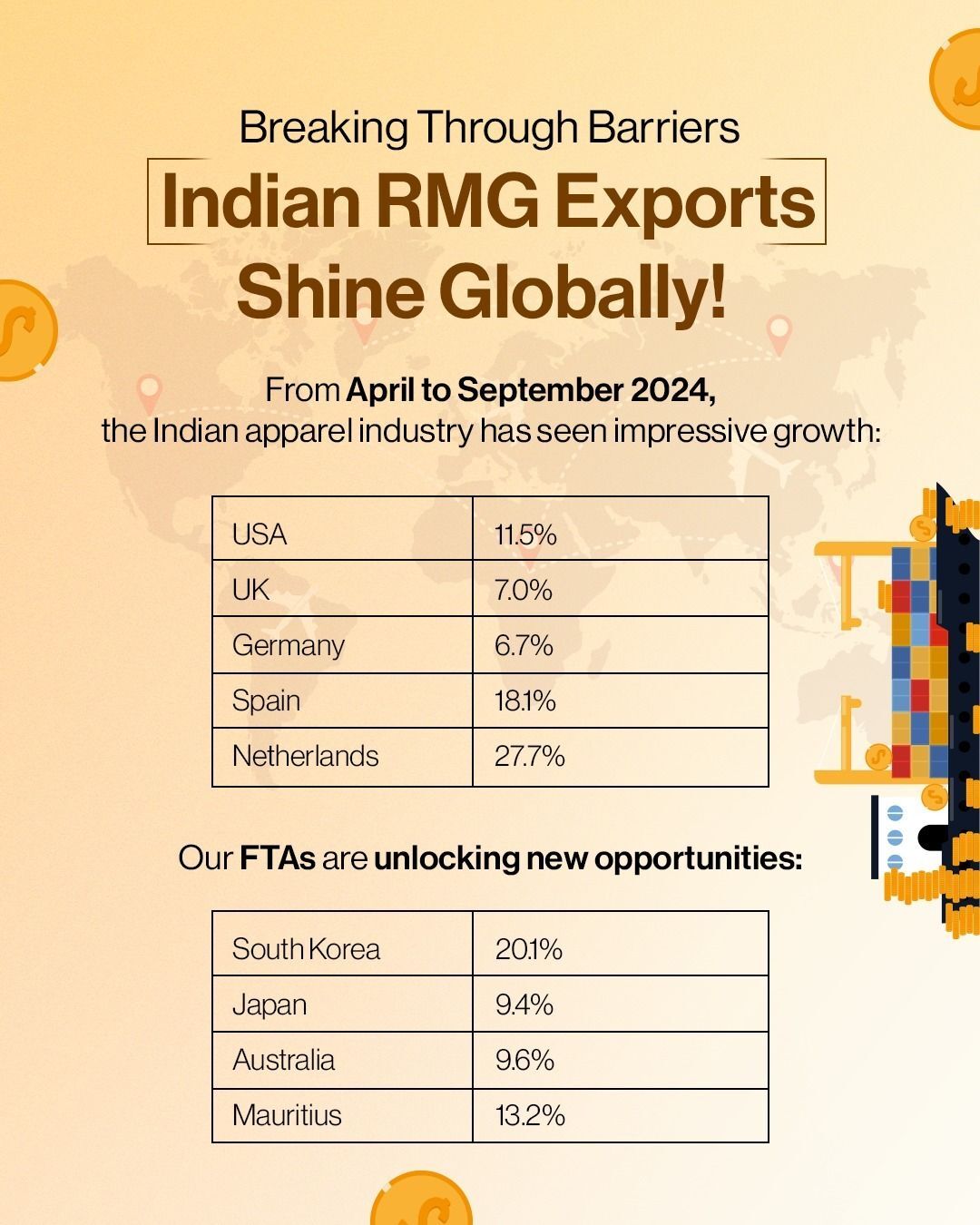
The Indian apparel industry has been making significant strides in the global market, with impressive growth recorded from April to September 2024. Key markets like the USA, UK, Germany, Spain, and the Netherlands witnessed double-digit percentage increases in Indian apparel imports during this period.
Growth in Key Markets:
|
Country |
Growth Rate (%) |
|
USA |
11.5 |
|
UK |
7 |
|
Germany |
6.7 |
|
Spain |
18.1 |
|
Netherlands |
27.7 |
FTAs Unlock New Opportunities:
India's strategic Free Trade Agreements (FTAs) with South Korea, Japan, Australia, and Mauritius have further fuelled the growth of the Indian apparel industry. These FTAs have reduced tariffs and streamlined trade procedures, making Indian apparel more competitive in these markets.
|
Country |
Growth Rate (%) |
|
South Korea |
20.1 |
|
Japan |
9.4 |
|
Australia |
9.6 |
|
Mauritius |
13.2 |
Reasons for growth:
Several factors have contributed to the remarkable growth of the Indian apparel industry:
• Skilled workforce: India boasts a large pool of skilled and cost-effective labour, which is a major advantage for the apparel industry.
• Favourable government policies: The government's supportive policies, including initiatives like "Make in India," have encouraged investment in the sector.
• Rising global demand: The increasing demand for affordable and stylish apparel has created opportunities for Indian manufacturers to tap into new markets.
• Improved quality and design: Indian manufacturers have significantly improved the quality and design of their products, making them more attractive to international buyers.
Sudhir Sekhri, Chairman of the Apparel Export Promotion Council (AEPC), while expressing his optimism on social media about the future of the Indian apparel industry, mentioned, "India's fashion industry is on a roll! With impressive growth rates in key markets like the USA, UK, Germany, Spain, and the Netherlands, our exports are soaring to new heights. And thanks to our strategic Free Trade Agreements (FTAs) with South Korea, Japan, Australia, and Mauritius, we're unlocking even more opportunities to showcase our talent on the international stage."
Data Comparison:
|
Country |
Growth Rate (%) |
Growth Rate (%) (April-September 2023) |
|
USA |
11.5 |
8.2 |
|
UK |
7 |
5.3 |
|
Germany |
6.7 |
4.1 |
|
Spain |
18.1 |
12.9 |
|
Netherlands |
27.7 |
21.5 |
Indian apparel industry is poised for further growth
The Indian apparel industry is poised for further growth and success in the global market. With its strong foundation, skilled workforce, favorable policies, and expanding market access, India is well-positioned to become a major player in the global apparel industry.
Eight innovative design talents have been selected as finalists for the 2025 International Woolmark Prize, the prestigious award celebrating fashion innovation and sustainability.
The finalists include ACT N1 (Italy), Diotima (USA), Duran Lantink (Netherlands), Ester Manas (Belgium), LGN Louis Gabriel Nouchi (France), LUAR (USA), Meryll Rogge (Belgium), and Standing Ground (UK/Ireland).
This marks the first biennial edition of the prize, which has supported design talent for over 60 years. Each finalist will receive AU$60,000 to create six Merino wool looks, showcasing the fiber's versatility and eco-friendly properties. One designer will win AU$300,000 to advance their business, with opportunities to feature in leading global retailers.
IB Kamara, Creative Director for Off-White and Editor-in-Chief of Dazed, has been appointed Guest Artistic Director for the event. Kamara will play a key role in highlighting the work of the finalists and supporting their contributions to the future of fashion.
The program’s Innovation Academy offers mentorship from industry leaders like Gabriella Karefa-Johnson and Sinead Burke, alongside support from partners like Byborre and Knitwear Lab.
Two additional honors will be presented at the final event, the Karl Lagerfeld Award for Innovation and the Supply Chain Award, recognizing exceptional contributions to Merino wool and sustainable practices.
With a legacy that includes Karl Lagerfeld and Yves Saint Laurent, the Woolmark Prize continues to spotlight transformative design talent committed to sustainability.
India's textile and apparel trade fair, Bharat Tex 2025, is set to host a promotional roadshow in London from Nov 27-28, 2024. The event aims to showcase India’s strengths in textile manufacturing and explore opportunities for international partnerships. It will be held in anticipation of the main fair scheduled from Feb 14 -17, 2025 in New Delhi.
The two-day roadshow will include a symposium, exclusive one-on-one meetings, and round table discussions on the first day, while the second day will be dedicated to additional meetings with Indian delegates. This format will offer ample opportunities for direct engagement and in-depth discussions about the future of the textile trade.
Bharat Tex 2025 seeks to enhance India's reputation as a global textile hub and to foster new business connections with international markets. Although many UK-based brands and retailers already have strong ties with Indian manufacturers, the London roadshow will provide a platform to explore new trends, partnerships, and opportunities in India's thriving textile and apparel industry. Attendees will participate in B2B and B2G meetings, sign memorandums of understanding (MoUs), and engage in other networking activities.
Organised by the Textile Export Promotion Councils (EPCs) with the support of India’s Ministry of Textiles, Bharat Tex 2025 will emphasise the advancements in India’s textile sector, focusing on innovation, sustainability, and investment potential. The fair is designed to attract global interest in India’s growing capabilities in textile production and design.
At the Bharat Tex 2025 Curtain Raiser event in New Delhi, Giriraj Singh, Union Textiles Minister, highlighted the sector's significant potential, projecting that India's textile industry will grow to $350 billion by 2030, creating an estimated 35 million jobs. The roadshow in London will pave the way for deeper international collaborations and investments that will contribute to this ambitious growth trajectory.
Set for continued growth next year, Vietnam’s garment industry is looking to diversify its key export markets as it waits to see what steps will be taken by US President-elect Donald Trump in terms of tariffs.
According to the Vu Duc Giang, Chairman, Vietnam Textile and Apparel Association (VITAS), the country’s garment exports will rise to $47-$48 billion in 2025 while this year, the country’s apparel exports will rise by 11.3 per cent to an estimated $44 billion. To leverage this growth, the association will continue to diversify its export markets, products and clients, he adds.
Garments from Vietnam are exported to about 104 markets, but the US remains its biggest market, accounting for about 38 per cent of the country’s apparel shipments this year. The Southeast Asian nation is the second-largest supplier of clothes and shoes to the U.S., according to the American Apparel & Footwear Association.
Vietnam is the world’s third largest apparel producer and exporter after China and Bangladesh, according to VITAS. The trade group sees positive momentum for exports next year as many garment companies have already received orders for the first quarter, Giang added.
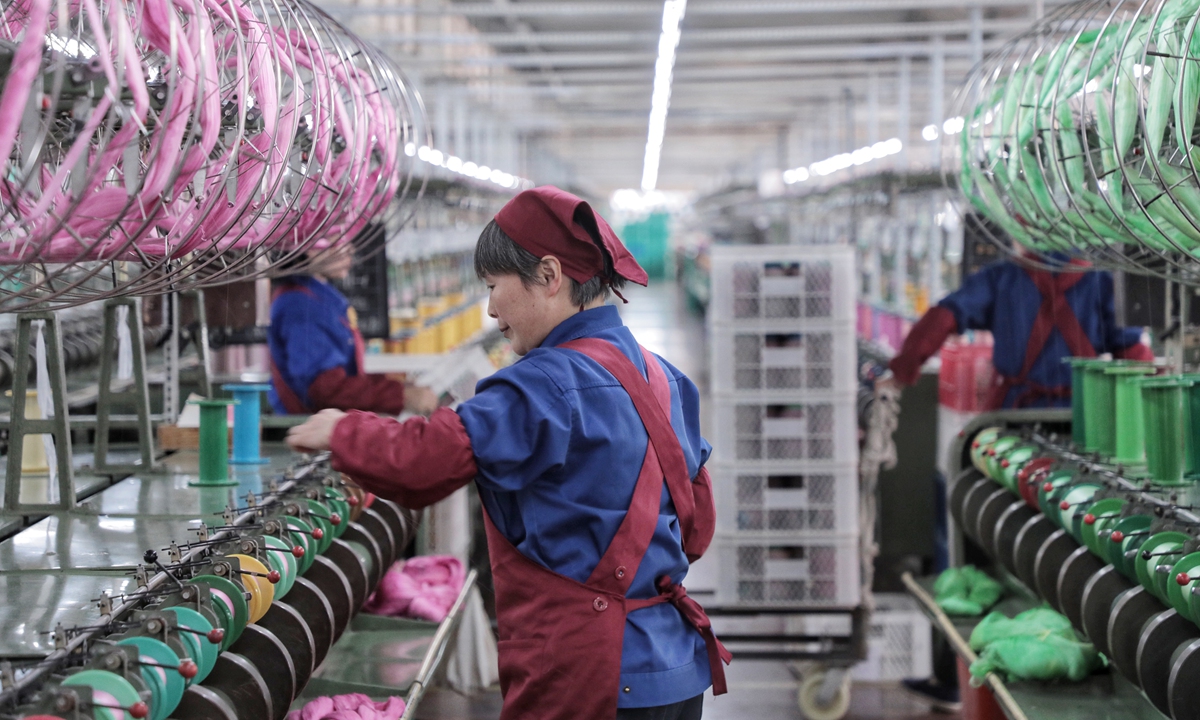
China's dominance in the US garment import market is waning. After reaching a peak around 2010, its market share, both in terms of value and the number of units, has been steadily declining. This trend has significant implications for both the US and Chinese economies, as well as the global garment industry.
Statistics clear the picture
China's share of US garment imports peaked around 2010, with nearly 40 per cent market share in value terms and over 45 per cent in units. Since then, there has been a consistent decline, with China’s share in 2024 estimated at around 25 per cent in value and 35 per cent in units. Interestingly, the decline is more pronounced in terms of value than units, suggesting a shift towards cheaper garments from other sources. The Office of Textiles and Apparel (OTEXA) data too supports the trend. For example, in 2010, China accounted for 39.5 per cent of US apparel imports by value. By 2023, this had fallen to 27.2 per cent.
There are several reason for this decline. For a start, rising labor costs in China is a major factor. As China's economy has grown, so have wages, making it less competitive as a source of low-cost garments. Meanwhile, US importers are increasingly diversifying their sourcing to reduce reliance on any single country, particularly in light of geopolitical uncertainties and supply chain disruptions. Growth of other manufacturing hubs like Vietnam, Bangladesh, and India has increased competition, attracting investment and market share. OTEXA data too reveals, Vietnam has been a major beneficiary of this shift. Its share of US garment imports by value has increased from 7.9 per cent in 2010 to 15.7 per cent in 2023. In fact, Nike, once heavily reliant on China, has significantly diversified its sourcing. In its 2023 fiscal year, Vietnam accounted for 31 per cent of its footwear production, surpassing China's 24 per cent reveals Nike Fiscal Year 2023 Impact Report.
Nearshoring is another factor as some US companies are shifting production closer home, to countries in Central America and the Caribbean, to reduce lead times and transportation costs.
Implications of the shift
For the US: The diversification of sourcing can enhance supply chain resilience and potentially create new opportunities for trade with other countries. However, it may also lead to higher prices for consumers in the short term.
For China: The decline in garment exports puts pressure on its economy to move up the value chain and focus on higher-value-added industries.
Global garment industry: The shift is creating a more dynamic and competitive global garment industry, with implications for labor standards, environmental sustainability, and trade policies.
While China is unlikely to lose its position as a major garment supplier to the US entirely, its dominance is clearly diminishing. The trend towards diversification and regionalization of production is likely to continue, shaping the future of the global garment industry. This presents both challenges and opportunities for all stakeholders, and it remains to be seen how these will play out in the years to come.
- 1
- 2
- 3
- 4
- 5
- 6
- 7
- 8
- 9
- 10
Peeling Back the Fabric: Glimpact study gives true ecological threads of apparel…
A groundbreaking new study by Glimpact, has pulled back the curtain on the often-obscured environmental footprint of the apparel industry,... Read more
Embracing Innovation: The rise of sustainable fibers in a changing world
The quest for sustainable and high-performance alternatives to traditional resources has sparked a revolution in fiber use. According to the... Read more
Garment Tech Istanbul to showcase cutting-edge apparel technology and drive glob…
A global hub for apparel innovation Istanbul will welcome leading global players in garment, embroidery, and textile machinery from June 25... Read more
From discarded threads to global trends, Panipat's recycled yarn revolution
Panipat, a city synonymous with textiles, is rapidly evolving from a traditional weaving hub to a powerhouse of sustainable yarn... Read more
Bangladesh emerges strong in global RMG exports as China's loses ground
Bangladesh is rapidly strengthening its position as a major player in the global apparel export market, capitalizing on a shift... Read more
Blossom Premiere Vision returns in June to support luxury fashion's shifting nee…
As the global luxury goods market grapples with a prolonged slowdown, an industry once resilient to crises is now undergoing... Read more
Monforts technologies power sustainability showcase at Kingpins Amsterdam
Denim mills using Monforts systems dominate eco-focused fabric displays At the recent Kingpins Amsterdam exhibition held on April 16-17 at the... Read more
Bangladesh RMG exports navigate new skies amid cost concerns post India's trans-…
Bangladesh's RMG export is adapting to India's revocation of trans-shipment services, marked by maiden freighter flight carrying 60 metric tons... Read more
A stitch in time, fashion's 1% solution to a carbon crisis
The fashion industry, built on trends and textiles, is facing a stark reality: its environmental footprint is unsustainable. Hidden deep... Read more
Threadbare Foundations: Bangladesh’s RMG boom hangs by Indian yarns
Bangladesh’s ready-made garment (RMG) industry is a global juggernaut. Second only to China in apparel exports, the sector is the... Read more



